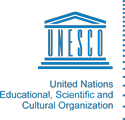2014. 14 p.
Periodical title:
Sex Education: Sexuality, Society and Learning, 14 (1), pp. 1-13
Description:
Policy-makers making decisions on the implementation of school-based sexuality education (SE) programmes face two important questions: (1) what are the costs of implementing and scaling up SE programmes, and (2) what are the impacts? This paper responds to these questions by retrospectively assessing costs, impact and cost-effectiveness of the national school-based SE programme in Estonia 1997–2009. The three-year curriculum had been taught to 190,000 students at the end of 2009. The cost of reaching one student was USD 32.90 and the total costs were USD 5.6 million. There has been a remarkable improvement in sexual health indicators in the age groups 15–19 and 20–24 years in Estonia between 2001 and 2009. During this period, annual abortions, STIs and diagnosed HIV infections in the age groups were reduced by 37%, 55% and 89%, respectively. It is difficult to assess to what extent the improvements in these sexual health indicators are attributable to the SE programme. Nevertheless, our conservative threshold analysis indicates that the Estonian SE programme could be considered cost-saving if only 4% of the observed reductions in HIV infections are attributable to the programme. There is strong evidence, therefore, to support that the Estonian school-based sexuality programme has been cost-effective.
Themes:
Resource types:
Keywords:
Languages:
Record created by:
IIEP


